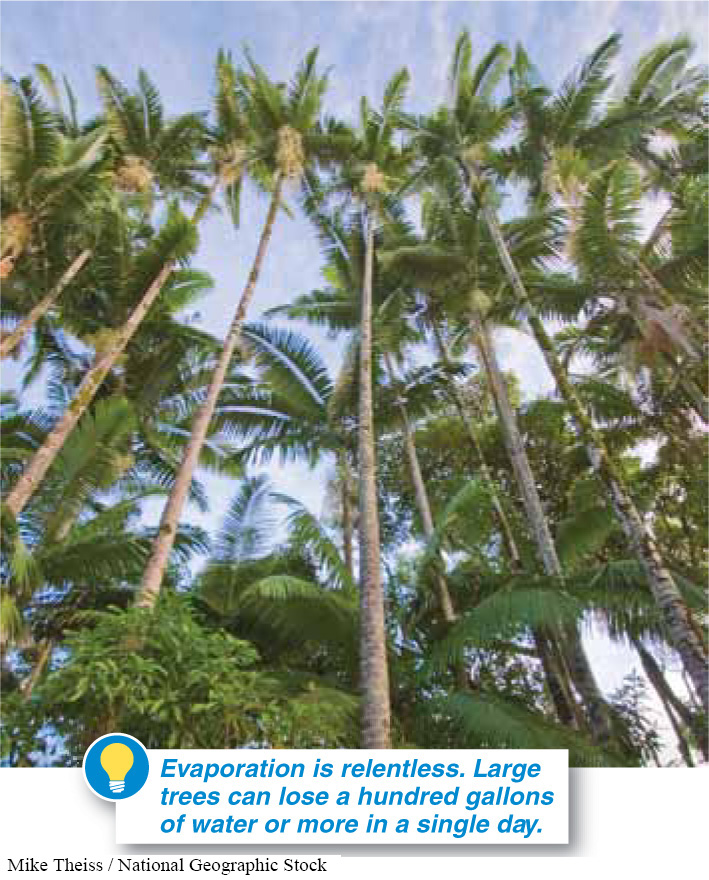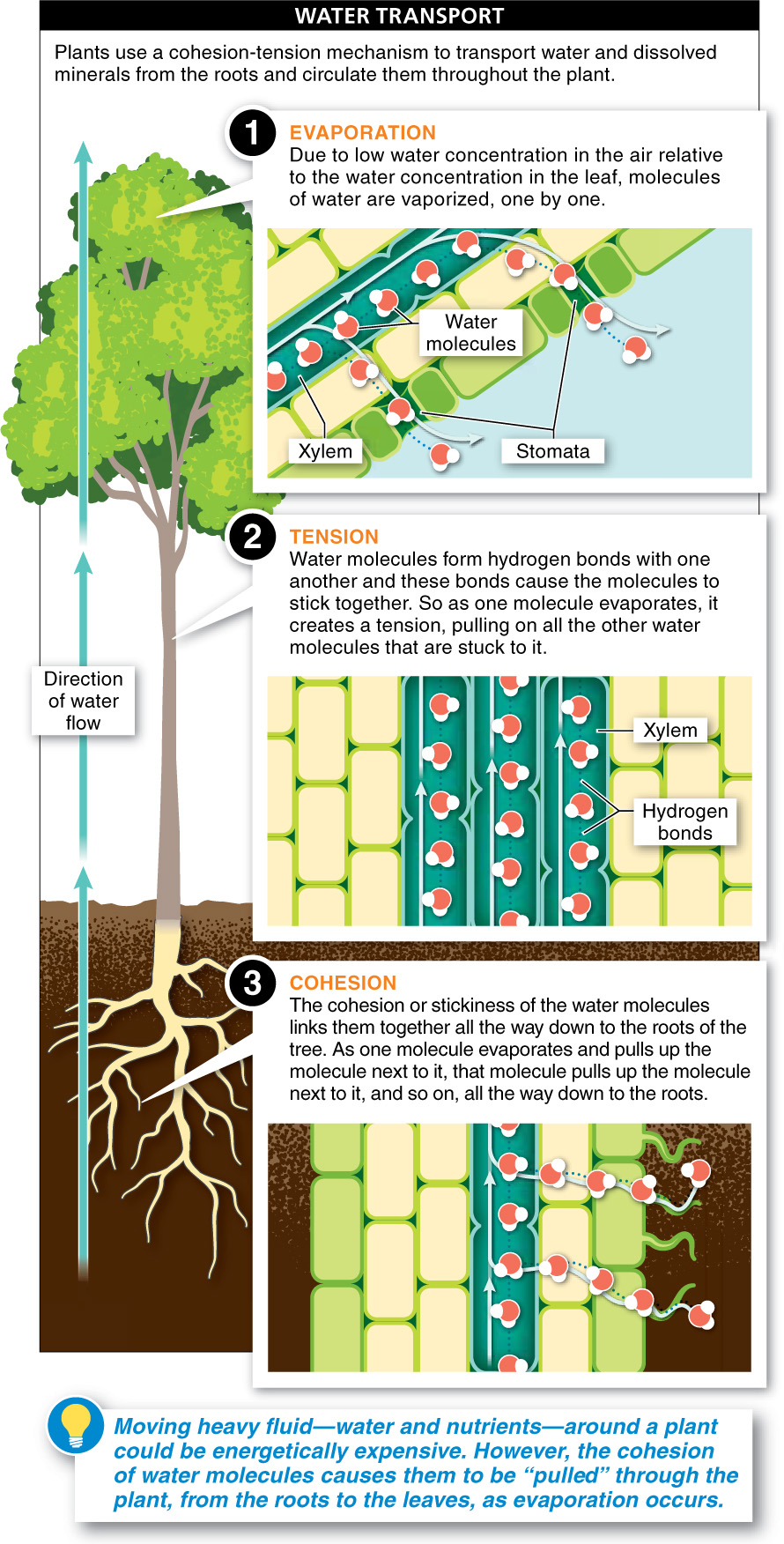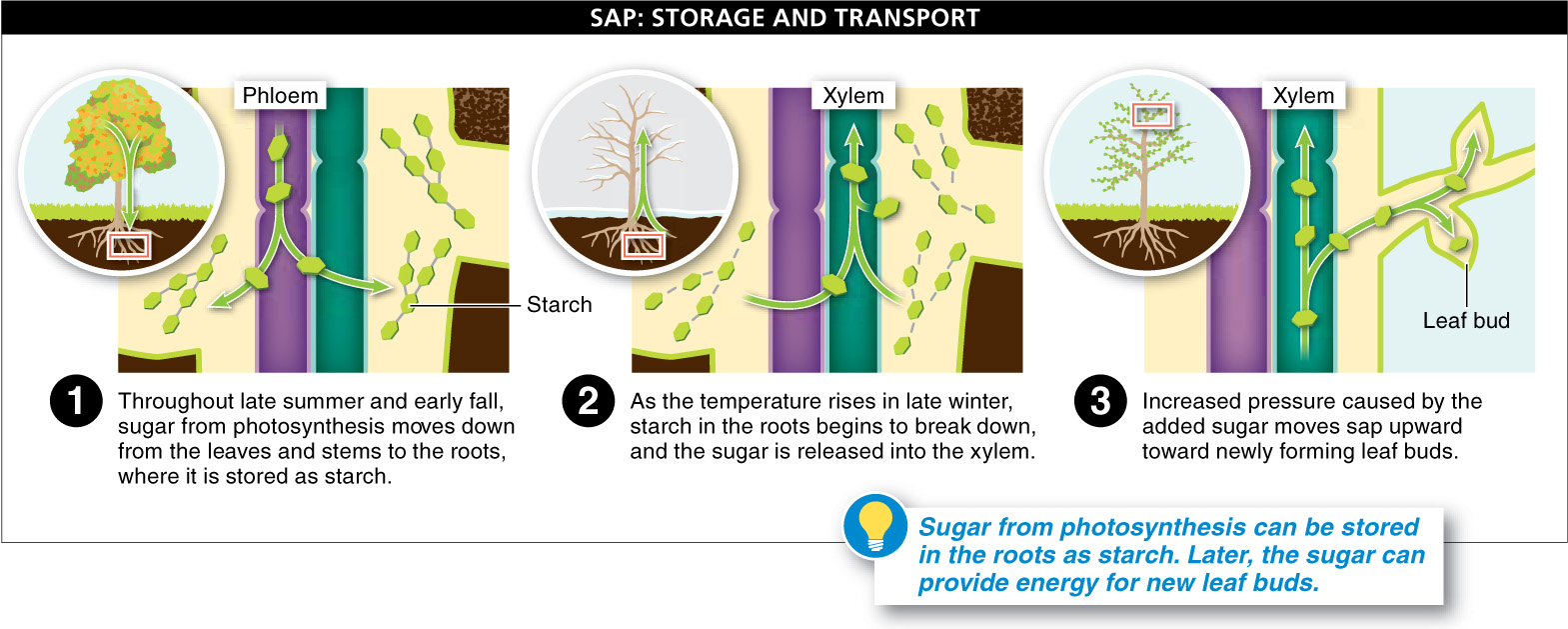Evaporation is relentless. Leave a glass of water on your desk for a day or two, and eventually all the water will evaporate away. Because there is less water in the dry air than in the glass, the liquid water continuously turns to vapor. If you pour the water onto a plate so that it spreads out, it will evaporate even faster, because more of the water is in direct contact with the air.
How does water get to leaves at the top of a giant tree?
Evaporation steals the moisture from leaves, too. And although evaporation can cool leaves and help move water and ions up a plant, perpetual water loss to the atmosphere is a real problem for plants, especially trees. In one day, a big tree in a North American forest can lose 100 gallons of water or more! That is 100 gallons of water that the tree’s roots absorbed but the plant does not get to use for its physiological needs. Water loss through evaporation also presents a physical challenge for the plant. Most water is lost from the leaves, high in the tree, but all of the water comes from the ground. Somehow, water must be constantly delivered to the leaves—


Water transport is the job of the xylem. As we saw earlier, the xylem is one of the two transport systems in plants. It is responsible for directing the flow of water and dissolved minerals from the roots to all of the plant’s cells.
In the absence of a pump like the one in animals’ circulatory systems, there are two possible explanations for how water can be transported from the roots to the leaves—
“To believe that columns of water should hang in [the xylem] … and should … transmit downwards the pull exerted on them … by the transpiring leaves, is to some of us equivalent to believing in ropes of sand.”
—FRANCIS DARWIN, botanist (Charles Darwin’s son; ca. 1900). (His disbelief in Henry Dixon’s 1896 cohesion-
There are three important components to the process by which water is moved throughout a plant (FIGURE 17-33).
- 1. Evaporation. Because of low water concentration in the air relative to that in the leaf, molecules of water, one by one, are vaporized and lost from the leaf.
- 2. Tension. Recall from Chapter 2 that hydrogen bonds cause water molecules to stick together. As one water molecule evaporates, it creates a tension, pulling the chain of water molecules stuck to it.
- 3. Cohesion. Through this cohesion, or stickiness, water molecules all the way down to a tree’s roots are pulled up as molecules evaporate, one by one, from the leaf.
714
The beauty of this system—
Is there a limit to how tall a tree can grow? Why?
Although this system works well, it does have a disadvantage: it places a limit on how tall a tree can grow. Leaves at the top of very tall trees have trouble getting enough water. They must “pull” it up against the ever-
Maple syrup comes from trees. What is it?
The sap in the xylem doesn’t always contain just water and dissolved minerals. Sometimes the fluid contains sugars, too. (Recall that phloem is generally the sugar-


715
TAKE-HOME MESSAGE 17.13
Xylem directs the flow of water and dissolved minerals from the roots to all the tissues of the plant. The force driving the flow of this fluid (the xylem sap) comes from evaporation of water from the leaves, which pulls water up from the roots.
Describe the process by which water is moved from a plant's roots to its leaves.
As a water molecule evaporates from a leaf, tension is transmitted through a hydrogen bond to an adjacent water molecule, pulling it into its former location in the leaf. This water molecule, in turn, transmits this tension through a series of water molecules linked by hydrogen bonds, all the way down to the roots.
716